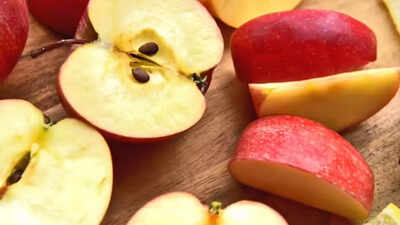Sliced fruit is healthy, refreshing, and ideal for snacks, lunchboxes, or salads, but one common problem is browning. When fruit is exposed to air, oxidation occurs, causing the flesh to turn brown. While this does not usually affect taste, it can make fruit look unappealing, reducing its visual appeal, especially for children. Several effective methods can prevent fruit from turning brown, keeping it fresh, crunchy, and visually attractive for hours, even up to 24 hours after cutting. These methods also help preserve nutrients, maintain flavour, and make fruit more enjoyable to eat while reducing food waste.
Why does sliced fruit turn brown
When fruit is sliced or bitten into, oxygen in the air reacts with enzymes in the fruit called polyphenol oxidases. This reaction produces melanin, the brown pigment you see on the surface of the fruit. While browning does not usually affect the taste, it can make the fruit look unappetising and reduce the visual appeal of meals. Apples, pears, and bananas are particularly prone to browning due to their high enzyme activity.
Four soak solutions to keep sliced fruit fresh and prevent browning
When fruit is cut, exposure to air triggers a chemical reaction called oxidation, causing the flesh to turn brown. This natural process can make fruit look unappealing, even if the taste remains unchanged. Soaking cut fruit in specific solutions can slow or prevent browning, maintaining freshness, juiciness, and visual appeal for several hours. These methods are effective for a variety of fruits, including apples, pears, peaches, mangoes, and melon, making them versatile for fruit salads, snacks, or pre-prepared meals. Proper soaking also helps preserve texture and flavour, ensuring the fruit remains crisp and appetising.1. Lemon juice solutionOne of the most popular and effective methods is soaking fruit in a lemon juice solution. To prepare, simply mix one tablespoon of lemon juice with one cup of water. The acidity of the lemon juice lowers the pH on the fruit’s surface, slowing down the oxidation process that causes browning. Other citrus juices, such as orange or pineapple, can be used as alternatives, offering a slightly different flavour profile. In addition to preventing discoloration, lemon juice adds a refreshing tang to the fruit, making it ideal for fruit salads or snacking.2. Citric acid solutionCitric acid is another excellent option for preventing fruit browning. To make the solution, dissolve one tablespoon of citric acid in one cup of water. Citric acid is readily available in most supermarkets, usually in the baking or canning section. Like lemon juice, it works by reducing the pH on the fruit’s surface, slowing down the enzymatic reaction responsible for browning. This method is particularly effective for fruits that brown quickly, such as apples and pears, and is a great choice if you prefer a neutral taste without added citrus flavour.3. Soda waterSoaking cut fruit in plain soda water or seltzer is a surprisingly effective method. No mixing is required, just immerse the fruit in soda water for a few minutes. The carbon dioxide bubbles in the soda water help create a light barrier on the surface of the fruit, reducing oxygen exposure and slowing browning. In our tests, soda water proved to be the most effective soak, maintaining both the colour and texture of apple slices for hours. The fruit remained crisp and juicy, making it an excellent choice for preparing snacks in advance or for fruit served in buffets and lunchboxes.4. Plain cold waterFinally, simply soaking fruit in plain cold water is the most basic method. While not as effective as lemon juice, citric acid, or soda water, it still slows the browning process slightly by limiting oxygen exposure. This method is quick and convenient when other solutions are not available, and it works best if the fruit is kept in the refrigerator immediately after soaking. Cold water is ideal for short-term storage or when preparing fruit for immediate consumption.
Non-soaking methods to keep cut fruit fresh
If you don’t have time for soaking, there are a few alternative methods that work:
- Reassemble apple pieces: After cutting, fit the slices snugly back around the core using a rubber band. This reduces oxygen exposure and slows browning.
- Sprinkle cinnamon: While this doesn’t stop oxidation, it masks browning visually and adds a tasty spice to your fruit.
- Direct lemon juice: Squeezing lemon juice over fruit immediately after cutting can help prevent browning. While not as thorough as soaking, it is a quick and practical solution.
Tips for long-lasting fresh fruit
- Always store cut fruit in an airtight container in the fridge to reduce exposure to oxygen.
- Use clean utensils and cutting boards to avoid introducing bacteria that can accelerate spoilage.
- Combine methods for best results, for example, soak in soda water and store in airtight containers.
- For fruit salads or lunchboxes, add dressing or syrup just before serving to maintain colour and flavour.
Disclaimer: This article is for informational purposes only and does not constitute medical advice. Always consult a qualified healthcare professional before making any changes to your health routine or treatment.Also read | Cooking oils that raise heart disease risk and could be dangerous for your health











